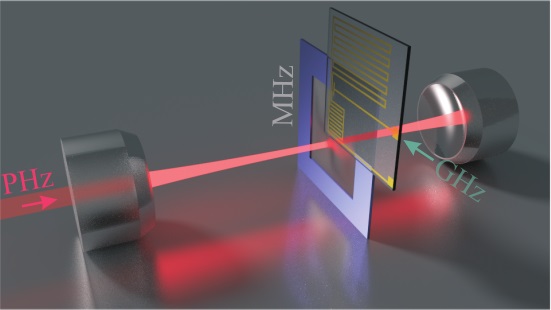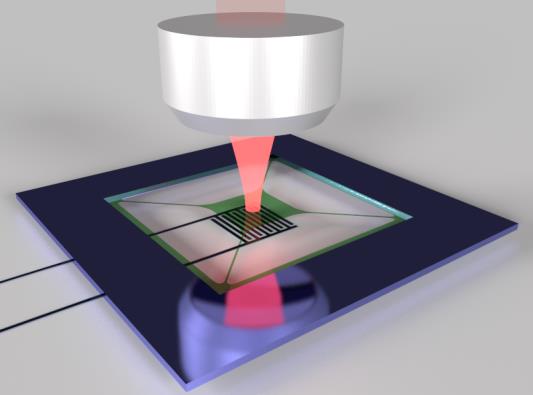Optomechanics and Quantum Measurments
SOME PUBLICATIONS
K. Makles, T. Antoni, A. G. Kuhn, S. Deléglise, T. Briant, P.-F. Cohadon, R. Braive, et al. “2D Photonic-Crystal Optomechanical Nanoresonator.”
Opt. Lett. 40 (2015)
X. Chen, C. Chardin, K. Makles, C. Caër, S. Chua, R. Braive, I. Robert-Philip, T. Briant, P.-F. Cohadon, A. Heidmann, T. Jacqmin and S. Deléglise. “High-finesse Fabry-Perot cavities with bidimensional Si3N4 photonic-crystal slabs.”
Nature Light: Science & Applications (2017)
Arxiv
PEOPLE
Thibault Capelle (PhD)
Tristan Briant (permanent)
Antoine Heidmann (staff scientist)
Thibaut Jacqmin (staff scientist)
Samuel Deléglise (staff scientist)

Optomechanical Transducers
We use radiation pressure to demonstrate the quantum behavior of micro- and nano-mechanical resonators, and apply optomechanical techniques to use them for quantum information processing. We plan to use a photonic-crystal nanomembrane coupled to both an optical and a microwave field to transfer quantum information between these two electromagnetic-frequency domains. These transducers should have important applications as quantum information often created in the microwave range (with superconducting quantum computing systems, operated in cryogenic environments) will be able to be transferred to the optical domain and easily transported with optical fibers to other quantum information devices.

Photonic crystal nanomembranes as ultralight optomechanical resonators
In close collaboration with the optomechanics group at Laboratory for Photonics and Nanostructures, we are working on a technic to increase the reflectivity of suspended nanomembranes as thin as 200 nm. By etching a periodic array of holes (a photonic crystal) inside the membrane, we could increase its optical reflectivity from < 30% for uniform membranes to more than 99.8 %. These ultra-light suspended nanometersized-mirrors are very promising for the development of hybrid transducers since they are easily coupled to optical light via radiation pressure and microwave radiation via dielectric gradient forces, two fundamental backaction forces in optical and electromechanical sensing. These resonators are currently incorporated in a full electro-optomechanical system to demonstrate the conversion of quantum signals from the microwave to the optical domain.<img
